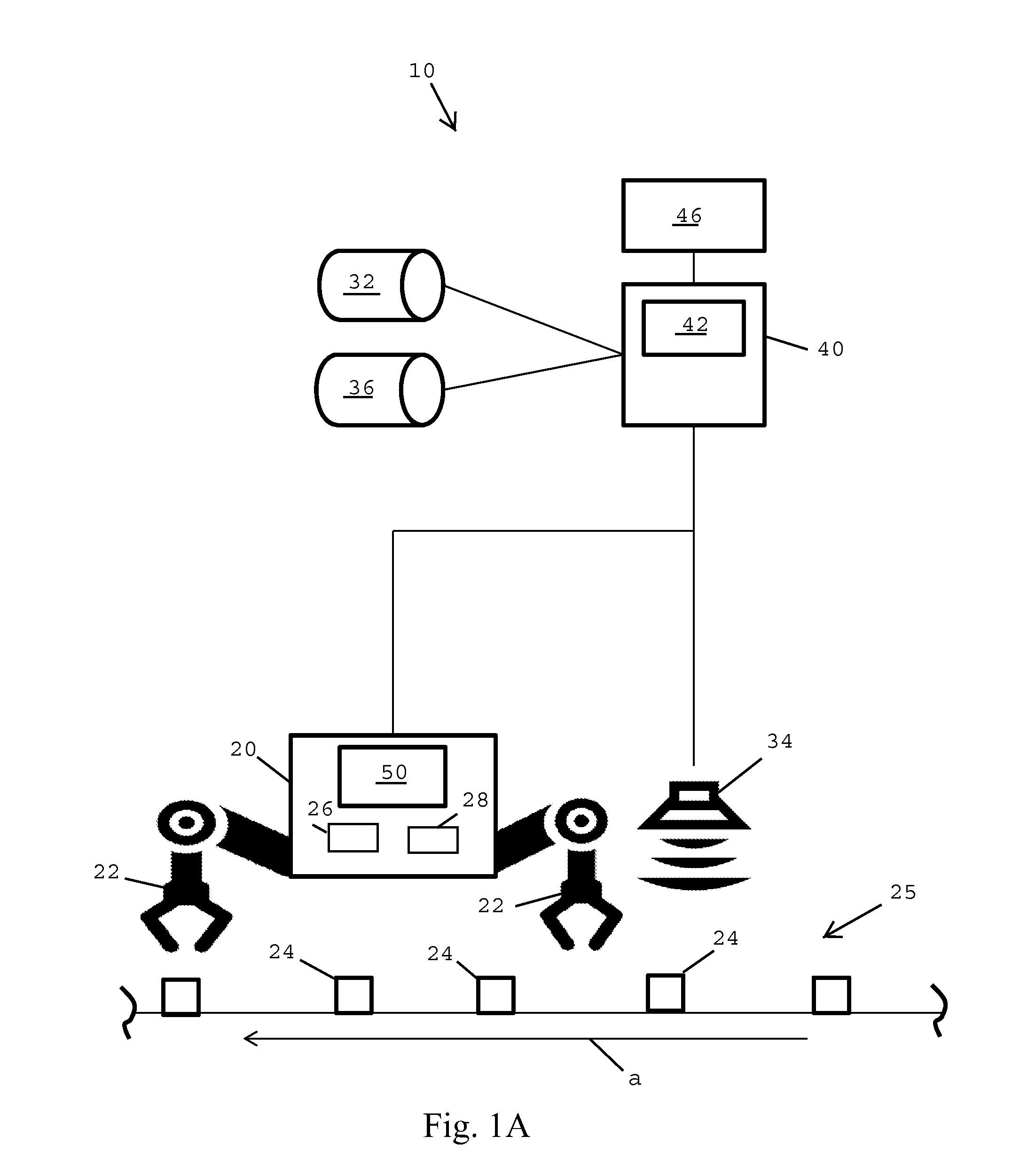Robotic Control System Using Virtual Reality Input
a robotic control system and input technology, applied in the field of robotic control, can solve the problems of poor adaptability of ai robotic control systems to uncertain, unfamiliar or changing environments, system limitation to the quality of input sources,
- Summary
- Abstract
- Description
- Claims
- Application Information
AI Technical Summary
Benefits of technology
Problems solved by technology
Method used
Image
Examples
example
[0057]A prototype of system, substantially as shown and described with respect to FIGS. 1A-5, was built to find batteries and mercury containing Compact Fluorescent Lamp (CFL) light bulbs in a trash stream about to be burned. A USB video camera visual data source was used as sensor 34. A bright light was also used to provide higher contrast for the camera. The physical inputs 101 included a live video feed generated by the camera. A representative first set of rules 102 for the RWOs (CFLs) 24 were loaded onto data store 32, and included the size of the batteries and CFL bulbs, the best pickup location for a CFL, the best location to pick up a broken piece of glass, and the deposit location for each type of material picked up, in x,y coordinates. This set 102 also included data about the amount of broken CFL glass it was safe to leave, and the priority to use in removing batteries in the event more batteries were identified then could be removed, by ordering them from most to least h...
PUM
 Login to View More
Login to View More Abstract
Description
Claims
Application Information
 Login to View More
Login to View More - R&D
- Intellectual Property
- Life Sciences
- Materials
- Tech Scout
- Unparalleled Data Quality
- Higher Quality Content
- 60% Fewer Hallucinations
Browse by: Latest US Patents, China's latest patents, Technical Efficacy Thesaurus, Application Domain, Technology Topic, Popular Technical Reports.
© 2025 PatSnap. All rights reserved.Legal|Privacy policy|Modern Slavery Act Transparency Statement|Sitemap|About US| Contact US: help@patsnap.com



